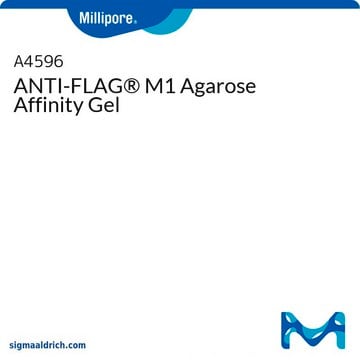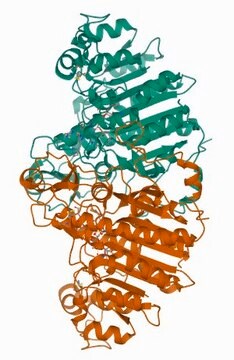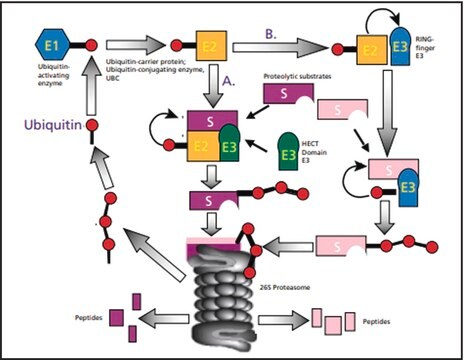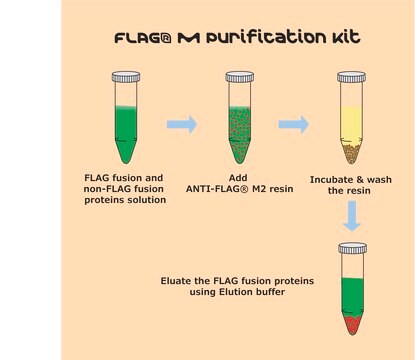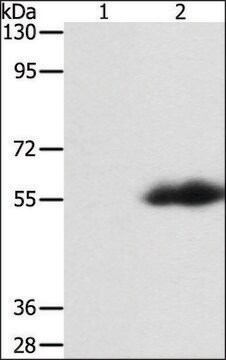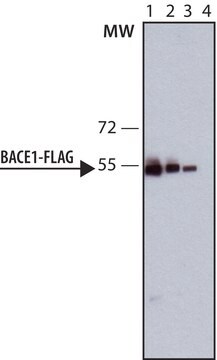F4042
Monoclonal ANTI-FLAG® M5 antibody produced in mouse
clone M5, purified immunoglobulin, buffered aqueous solution
Synonym(e):
Anti-ddddk, Anti-dykddddk
About This Item
Empfohlene Produkte
Biologische Quelle
mouse
Qualitätsniveau
Konjugat
unconjugated
Antikörperform
purified immunoglobulin
Antikörper-Produkttyp
primary antibodies
Klon
M5, monoclonal
Form
buffered aqueous solution
Aufgereinigt durch
using Protein A
Speziesreaktivität
all
Konzentration
2-5 mg/mL
Methode(n)
western blot (chemiluminescent): 10 μg/mL
Isotyp
IgG1
Immunogene Sequenz
DYKDDDDK
Versandbedingung
dry ice
Lagertemp.
−20°C
Allgemeine Beschreibung
Method of purification - Protein A
Immunogen
Anwendung
Physikalische Form
Angaben zur Herstellung
Sonstige Hinweise
Rechtliche Hinweise
Sie haben nicht das passende Produkt gefunden?
Probieren Sie unser Produkt-Auswahlhilfe. aus.
Lagerklassenschlüssel
12 - Non Combustible Liquids
WGK
nwg
Flammpunkt (°F)
Not applicable
Flammpunkt (°C)
Not applicable
Analysenzertifikate (COA)
Suchen Sie nach Analysenzertifikate (COA), indem Sie die Lot-/Chargennummer des Produkts eingeben. Lot- und Chargennummern sind auf dem Produktetikett hinter den Wörtern ‘Lot’ oder ‘Batch’ (Lot oder Charge) zu finden.
Besitzen Sie dieses Produkt bereits?
In der Dokumentenbibliothek finden Sie die Dokumentation zu den Produkten, die Sie kürzlich erworben haben.
Kunden haben sich ebenfalls angesehen
Unser Team von Wissenschaftlern verfügt über Erfahrung in allen Forschungsbereichen einschließlich Life Science, Materialwissenschaften, chemischer Synthese, Chromatographie, Analytik und vielen mehr..
Setzen Sie sich mit dem technischen Dienst in Verbindung.




